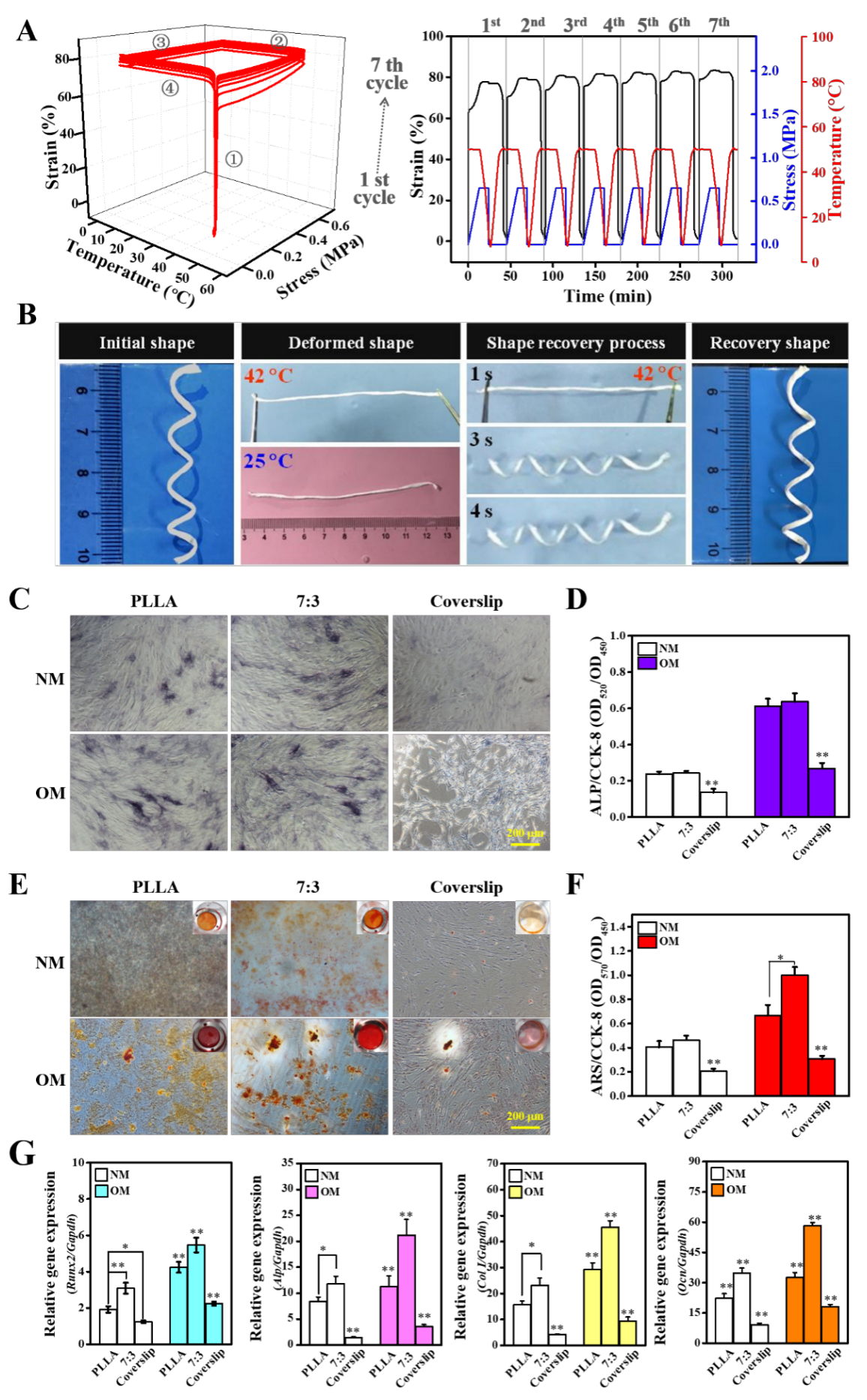On June 11, 2020, a research paper entitled “Shape memory and osteogenesis capabilities of the electrospun PHBV modified PLLA fibrous mats” was published online in the journal Tissue Engineering, a widely recognized and the most influential international journal in the field of Tissue Engineering and Regenerative Medicine (TERM). The first author of the paper is Xianliu Wang, a PhD student from Professor Yanzhong Zhang’s team in the College of Chemistry, Chemical Engineering & Biotechnology, Donghua University (DHU). This is the first time that DHU had a research paper published in this leading international journal. The reported research also manifests an important progress made by the DHU researchers in the field of fibrous biomaterials for TERM.
Poly(L-lactide) (PLLA), as a kind of representative polylactides, has been widely used as a biodegradable scaffolding polymer for bone tissue engineering. It has been previously known that PLLA possesses the shape memory effect if being properly programmed. Such an attribute may endow the PLLA with many new functions, such as minimally invasive implantation and applicable mechanical stimulation in situ, which are beneficial to enhance its repair effect on bone tissue regeneration after implantation. However, neat PLLA often suffers from the problems of inherent brittleness, high recovery temperature, and the relatively poor retention and recovery efficiency. To address the noted defects, researchers in the field of interest often employ the approaches of copolymerization or blending with inorganic nanoparticles or another polymer to improve the shape memory performance of the PLLA. Although some positive results have been achieved, how to have the mechanical strength and phase transition temperature coordinately tailored remains a challenge that affects the application efficacy of PLLA for bone tissue engineering.
To address the above-mentioned defects in PLLA, Professor Zhang’s team chose a novel biopolymer termed poly(3-hydroxybutyrate-co-3-hydroxyvalerate) (PHBV) to modify the shape memory effect of PLLA and to determine its capacity in directing osteogenic differentiation of mouse bone mesenchymal stem cells by electrospinning the PLLA-PHBV blends into ultrafine fibers and performing thorough biological evaluations. The study demonstrates that PHBV incorporation affords a viable approach to generate multifunctional PLLA-PHBV fibers with improved mechanical performance, shape memory properties, and osteogenic commitment for potential applications in engineering bone tissue. The present research laid a solid foundation for the future design of biomimetic fibers-based multi-functional 3D scaffolds with dynamic regulating characteristic for bone tissue engineering, as well as an in-depth understanding of bone tissue remodeling process in vivo.

(Shape memory (A, B) and osteogenic capabilities (C-G) of the electrospun PLLA-PHBV fibrous mats)
The scientific journal Tissue Engineering was initially launched in 1995. As the official journal of the Tissue Engineering and Regenerative Medicine International Society (TERMIS), it is considered the leading, biomedical journal advancing the field with cutting-edge research and applications on all aspects of tissue growth and regeneration. This research was partially supported by the National Natural Science Foundation of China, the National Key Research and Development Program of China, and the Fundamental Research Funds for the Central Universities by the Ministry of Education of China.
Here is the paper link:
https://doi.org/10.1089/ten.TEA.2020.0086
(Source: Xianliu Wang at College of Chemistry, Chemical Engineering and Biotechnology)


